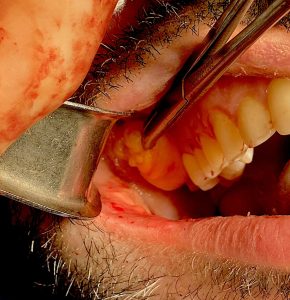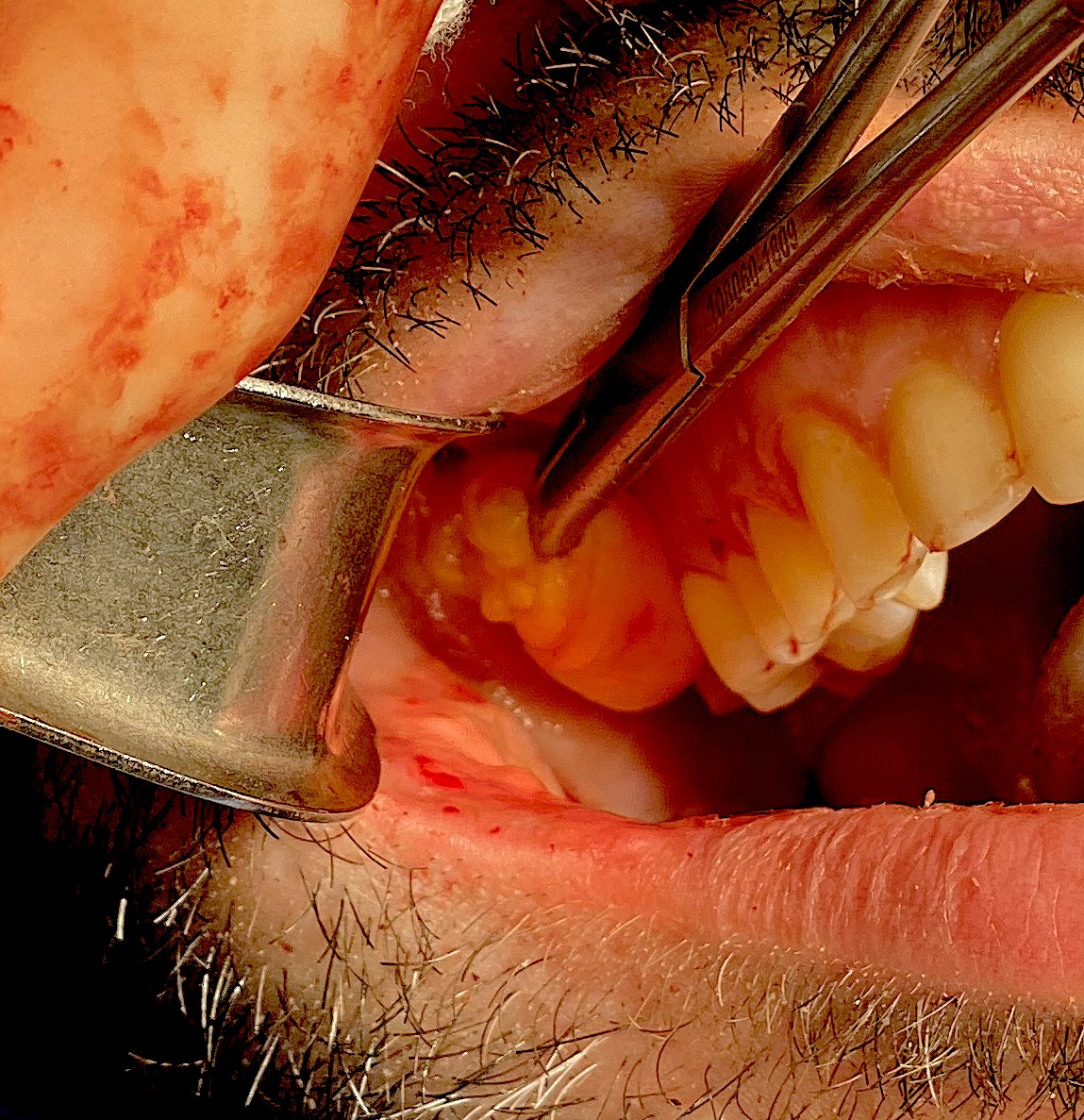The buccal lipectomy is a well known and popular cheek reshaping procedure. By removing part or all of this encapsulated fat pad the fullness of the cheeks is reduced creating a modest to moderate facial slimming effect. The buccal fat pad is a unique appearing fat with a bright yellow color, large lobules, a vascular pedicle and resides inside a thin surrounding capsule. Because of its size and encapsulated nature it is very pliable and easily teased out and removed.
There is one procedure where the buccal pad is fully exposed and seen but not for the purposes of removal. During a LeFort I osteotomy the vestibular intraoral incision and dissection around the posterior maxilla exposes the buccal fat pad in full view. It is so exposed that during the LeFort osteotomy it can be irritating as it continually gets in the way and needs constant retraction. But it is not usually removed as part of the Lefort osteotomy as there is no purpose in doing so. In the end it is tucked back into placed and the mucosal incision closed.

Undoubtably the prior LeFort procedure understandably causes some scarring around the fat pad and likely induces some volume loss of it as well. But the buccal pad can be extracted successfully but between the lower volume and internal scarring the external reductive effect may be less than normal.
Dr. Barry Eppley
Indianapolis, Indiana



